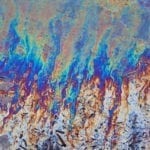Ecosystem forecasting allows scientists to predict events in the natural world, similarly to how meteorologists can predict the weather. The ability to forecast patterns in nature—such as mosquito or tick outbreaks—is becoming more of a priority to scientists because of the potential benefits it can offer to society, such as predicting pathogen outbreaks. In a recent study published in Anthropocene Coasts, researchers from the Bigelow Laboratory for Ocean Sciences and the Gulf of Maine Research Institute tapped into citizen interest in jellyfish to see how quickly a reliable ecosystem forecast model could be created using data collected by beachgoers.
Following several news stories covering the study to encourage community engagement, citizens along the coast of Maine sent their jellyfish reports to the researchers by email (jellyfish@bigelow.org) or social media using the Twitter hashtag, #MaineJellies. The researchers followed up with citizen reports by identifying the location of the jellyfish, the time they were spotted, the species discovered, the size, and the abundance. Three species of jellyfish were tracked: lion’s mane jellyfish, moon jellyfish, and whitecross jellyfish.
In the summer of 2015, scientists gathered 288 reports: 259 from email and 29 from Twitter. Whitecross jellyfish was the most common species sighting with 41% of reports, while lion’s mane jellyfish comprised 24% of reports, and moon jellyfish 18% of reports. During the first few weeks of the study, there were not enough jellyfish reports and data to reliably predict future outbreaks. However, after about three weeks of reporting the data provided consistently reliable forecasts.
While lead author Nicholas Record was surprised this particular ecosystem forecast model worked well, he notes there are some scenarios where scientists might have additional challenges. For instance, this method might not work well in certain environments or with certain species.
“It could be that one of the reasons it worked well for jellyfish is the relatively slow dynamics in the ocean, compared to some other places,” Record says.
Another challenge is the time-consuming process of sorting through email reports from citizens because of the variable descriptions of jellyfish outbreaks. But the “open invitation” to citizens to communicate with researchers over email resulted in “much more information,” compared to data collected on social media.
“We can do a lot of great ecosystem forecasting by involving everyone who is out there observing nature,” Record says. “[A]s our environment begins to change more rapidly, we’re going to need to monitor, understand, and predict changes without as much advanced warning, or in places that we haven’t been monitoring.”
Read the full paper: The jelly report: Forecasting jellyfish using email and social media in Anthropocene Coasts.




